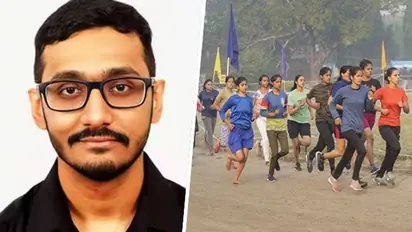Here's How Agnipath Scheme Modernises the Military

Synopsis
Introduced in June 2022, the Agnipath Scheme targets youth aged 17.5 to 21, enlisting them for four-year terms. The initiative plans an annual intake of 46,000 recruits, known as Agniveers, across the Indian Army, Navy, and Air Force.
By Aritra Banerjee
(Aritra Banerjee is the co-author of the book The Indian Navy @75: Reminiscing The Voyage.)
The Agnipath Scheme is a recruitment initiative to modernise the Indian Armed Forces by building a younger, more technologically proficient military. This scheme is part of a broader strategy to enhance the Army's agility and readiness in response to evolving global security dynamics.
Recruitment Modernisation:
Introduced in June 2022, the Agnipath Scheme targets youth aged 17.5 to 21, enlisting them for four-year terms. The initiative plans an annual intake of 46,000 recruits, known as Agniveers, across the Indian Army, Navy, and Air Force. These recruits receive comprehensive military training and develop leadership skills, preparing them for military and civilian careers. Upon their tenure, Agniveers receive a ₹12 lakh Seva Nidhi package to support their transition to civilian life or entrepreneurial endeavours.
Age and Agility Enhancement:
The Agnipath Scheme aims to reduce the average age of the Army from 32 to 26 years, thereby enhancing physical capabilities and operational readiness. Additionally, it seeks to improve technological proficiency and foster a culture of innovation within the forces.
Training and Equipment Modernisation:
Integrating Agniveers involves equipment upgrades, improved training methodologies, and new doctrines as part of the larger modernisation effort. Despite opposition from some veterans and political factions, the Agniveers are crucial to the Indian Army's long-term goal of ‘Technology Absorption.’
According to Lieutenant General C. Bansi Ponnappa, the Adjutant General of the Indian Army, around 100,000 Agniveers have been enrolled, with approximately 70,000 already deployed across various units, including those on the Northern and Western Borders engaged in counter-insurgency and counter-terrorism operations. This deployment includes 200 women Agniveers.
Critics have expressed concerns about the scheme's impact on operational readiness and troop morale. However, reports from various units indicate that Agniveers are performing very well, with some even outperforming soldiers who come from the traditional recruitment.
Recruitment and Retention Challenges:
The recruitment process for Agniveers begins with an online Common Entrance Exam (CEE) that filters academically qualified candidates for further selection. Agniveers undergo rigorous training with a scientifically modified curriculum to enhance their capabilities.
While the scheme shows promise, its success depends on addressing challenges such as talent retention and ensuring a smooth transition to civilian life. The scheme allows 25% of each batch to be retained permanently, fostering a pipeline of experienced personnel. The government has announced measures, including 10% reservations in central armed police forces (CAPF) and other government jobs, to facilitate this transition and ensure job security.
Technical Capability Development:
The scheme has significantly enhanced the Army's technical capabilities. The first two batches have seen a notable increase in technically qualified individuals, with 5% holding diplomas or ITI qualifications and 15% being graduates—compared to a minimal percentage in previous intakes.
The induction of 110 B.Tech and postgraduate candidates marks a significant milestone, bringing a new level of technical expertise to the Army. This aligns with the technological demands of modern warfare, positioning these individuals to play critical roles in the Army's ongoing technological initiatives.
Agniveers have shown superior academic performance compared to previous recruitment methods, with a 30% higher pass rate in academics at training centres, reflecting the scheme's effectiveness in attracting and nurturing technically proficient individuals for a technologically ready military.
Bengaluru PG murder case: What drove Abhishek to kill Kriti Kumari? All you need to know
Transformation Towards Leaner Force:
The Agnipath Scheme is intended to build a leaner, more efficient, and technologically adept military. By aligning with broader modernisation goals, the scheme aims to enhance India's national security and position the Indian Army as a formidable force on the global stage.
As India continues to refine and implement these initiatives, the Agnipath Scheme's impact on its armed forces and national security is expected to be significant, contributing to the country's preparedness to defend its sovereignty and interests.
Stay updated with the Breaking News Today and Latest News from across India and around the world. Get real-time updates, in-depth analysis, and comprehensive coverage of India News, World News, Indian Defence News, Kerala News, and Karnataka News. From politics to current affairs, follow every major story as it unfolds. Download the Asianet News Official App to stay informed anytime, anywhere.